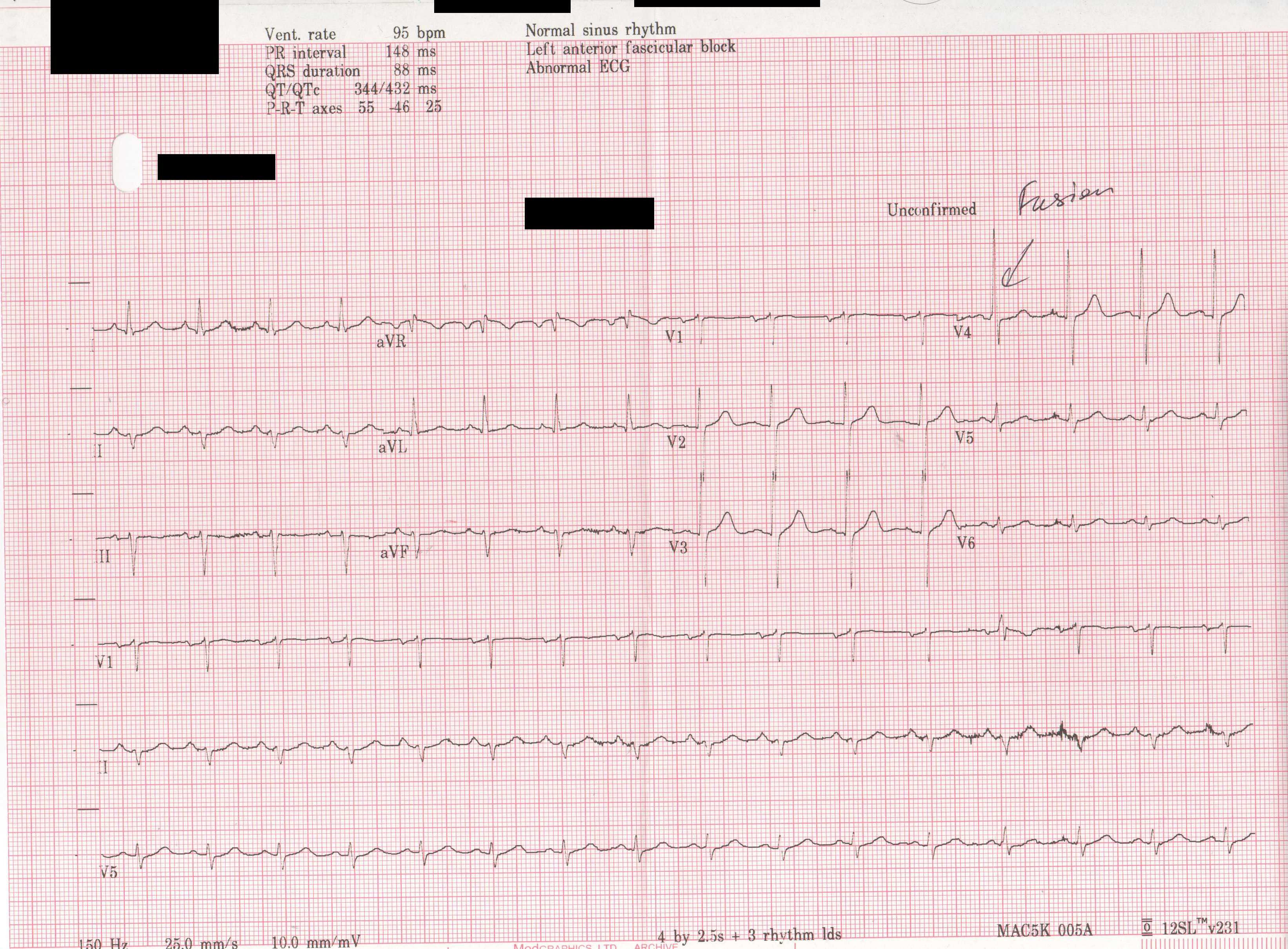Fusion beats

|
WikiDoc Resources for Fusion beats |
|
Articles |
|---|
|
Most recent articles on Fusion beats Most cited articles on Fusion beats |
|
Media |
|
Powerpoint slides on Fusion beats |
|
Evidence Based Medicine |
|
Clinical Trials |
|
Ongoing Trials on Fusion beats at Clinical Trials.gov Clinical Trials on Fusion beats at Google
|
|
Guidelines / Policies / Govt |
|
US National Guidelines Clearinghouse on Fusion beats
|
|
Books |
|
News |
|
Commentary |
|
Definitions |
|
Patient Resources / Community |
|
Patient resources on Fusion beats Discussion groups on Fusion beats Patient Handouts on Fusion beats Directions to Hospitals Treating Fusion beats Risk calculators and risk factors for Fusion beats
|
|
Healthcare Provider Resources |
|
Causes & Risk Factors for Fusion beats |
|
Continuing Medical Education (CME) |
|
International |
|
|
|
Business |
|
Experimental / Informatics |
Editor-In-Chief: C. Michael Gibson, M.S., M.D. [1]
Synonyms and keywords: Capture beats; fusion complexes; fusion QRS complexes
Overview
A fusion beat occurs when electrical impulses from different sources act upon the same region of the heart at the same time.[1] If it acts upon the ventricular chambers, it is called a ventricular fusion beat, wheres colliding currents in the atrial chambers produce atrial fusion beats.
Pathophysiology
Ventricular fusion beats can occur when the heart's natural rhythm and the impulse from a pacemaker coincide to activate the same part of a ventricle at the same time, causing visible variation in configuration and height of the QRS complex of an electrocardiogram reading of the heart's activity.[2] This contrasts with the pseudofusion beat wherein the pacemaker impulse does not affect the complex of the natural beat of the heart. Pseudofusion beats are normal. Rare or isolated fusion beats caused by pacemakers are normal as well, but if they occur too frequently may reduce cardiac output and so can require adjustment of the pacemaker.[3]
In some cases of VT with AV dissociation the SA node may transiently "capture" the ventricles, producing a capture beat, which has a normal QRS duration, or a fusion beat, in which the sinus and ventricular beats coincide to produce a hybrid complex. [4][5]
Electrocardiogram
In the example below, "late" (end-diastolic) PVCs are illustrated with varying degrees of fusion with normal conduction. For a fusion beat to occur the sinus P wave must successfully make its way to the ventricles to start the activation sequence, but before ventricular activation is completed by the late PCV. The resulting QRS complex resembles both the normal QRS, as well as the PVC and hence the term fusion QRS or fusion beat. The fusion beats are marked by an F in the illustration below:

References
- ↑ Understanding Electrocardiography 8 Ed. Elsevier Health Sciences. 2003. p. 245. ISBN 978-0-323-01905-7.
- ↑ Huff, Jane (October 2005). ECG Workout: Exercises in Arrhythmia Interpretation. Lippincott Williams & Wilkins. p. 247. ISBN 978-0-7817-8230-2.
- ↑ Catalano, Joseph T. (2002). Guide to Ecg Analysis. Lippincott Williams & Wilkins. p. 289. ISBN 978-0-7817-2930-7.
- ↑ Goldberger: Clinical Electrocardiography: A Simplified Approach, 6th edn P 210
- ↑ Marriott et al. Ventricular Fusion Beats. Circulation 26 (5): 880. 1962 ; http://circ.ahajournals.org/cgi/reprint/26/5/880